Today we are taking a look at the ADATA XPG Gammix S70 1TB SSD. The S70 is ADATA XPG’s highest performance drive, and it exists as a contemporary to other second-generation PCIe 4.0 SSDs like the Sabrent Rocket 4 Plus, WD SN850, and Samsung 980 Pro. Unique to the S70 is its choice of controller, the Innogrit IG5236 ‘Rainier’, which is not something I have encountered before. Today we will put the S70 through its paces and see how it stacks up and any growing pains the Rainier controller might experience (foreshadowing!).
ADATA XPG Gammix S70 1TB NVMe SSD
The ADATA XPG Gammix S70 1TB comes preinstalled with a grey heatsink in a M.2 2280 (80mm) form factor.
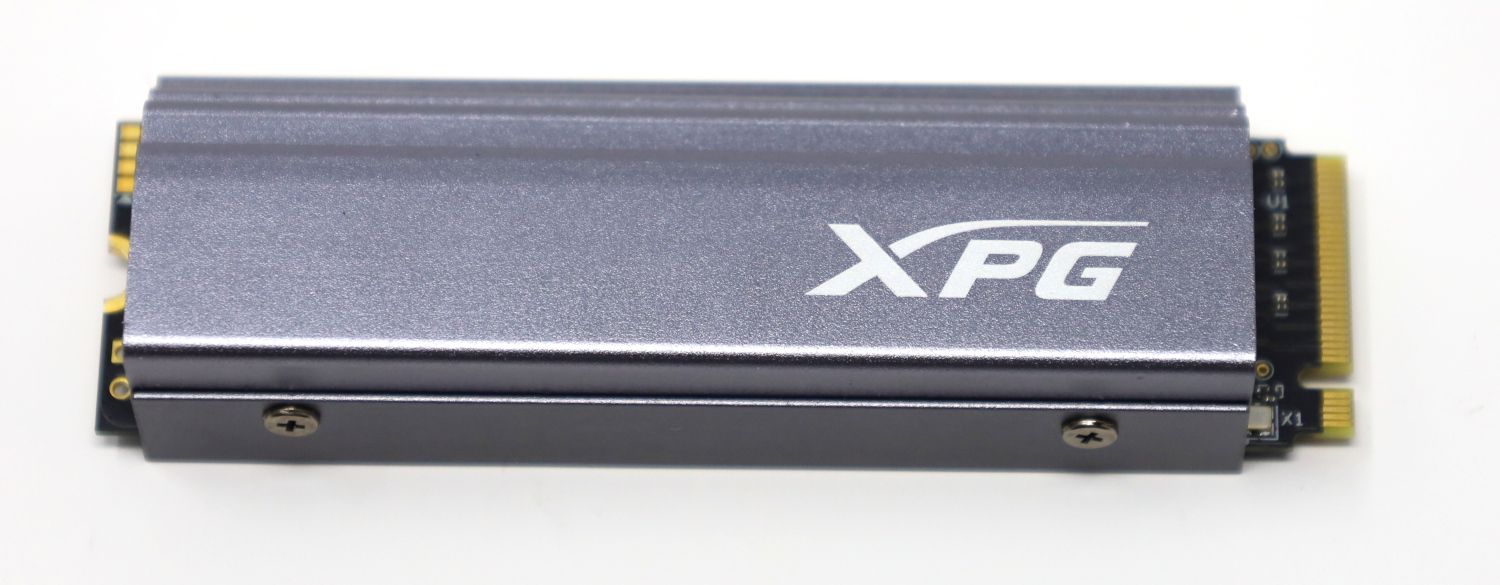
This heatsink is not easily removed by the end-user; the screws are easily removed but there is thermal adhesive essentially bonding it to the drive. Even when removed, finding out more about this drive is not easy; thanks to the shiny new Innogrit IG5236 controller, none of my normal utilities to interrogate NAND type function against this drive, and ADATA adds their own custom silkscreen to the NAND packages making visual identification impossible. Research online indicates what should be 96-layer TLC NAND packages, but I am unable to directly confirm it on my own drive.
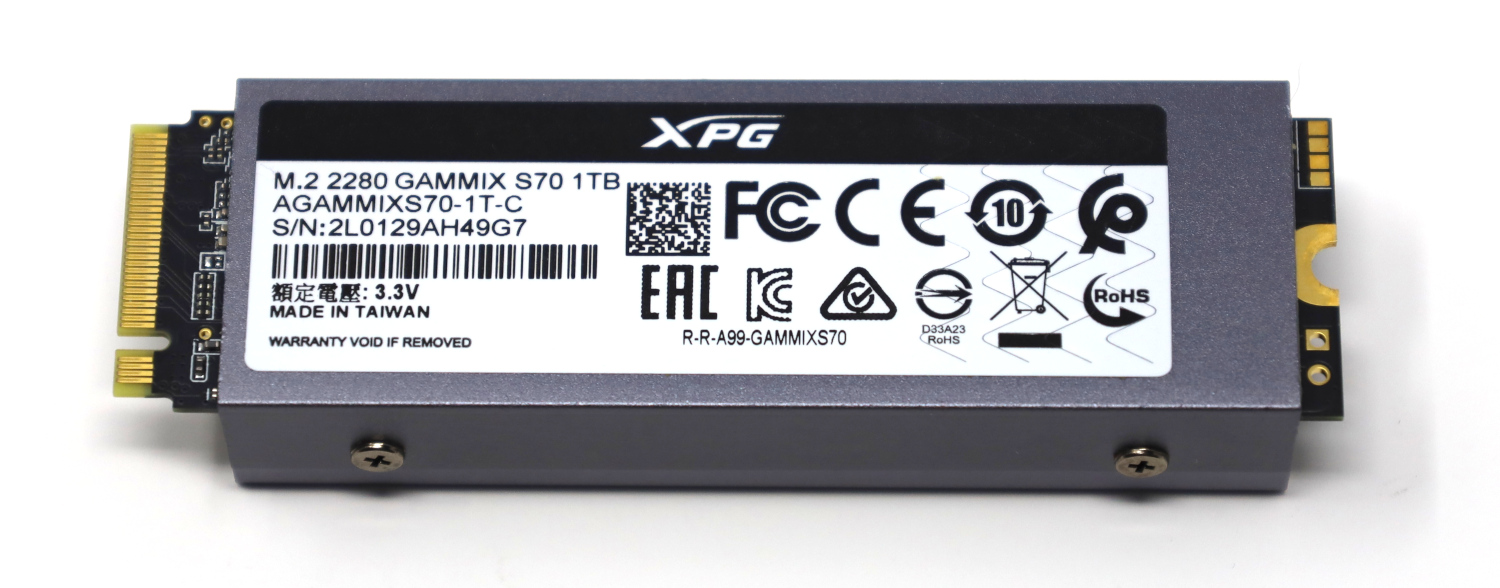
The heatsink itself is a grey block of aluminum that does an effective job of cooling this drive. Since it is not removable this drive is not recommended if you want to utilize a heatsink built into your motherboard, but for any other scenario, the presence of this heatsink is a good thing as our thermal results will show later on.

I did not think I could remove the heatsink without damaging the drive; when I tried the PCB was beginning to bend. Instead, ADATA sent over a promo shot of the bare drive, which may or may not reflect the reality of the drive underneath. At a minimum it is conceptually accurate as far as component placement. Inside the heatsink, the SSD is double-sided. The DRAM cache, controller, and half the NAND is on the top and the other two NAND packages are on the bottom.
ADATA XPG Gammix S70 SSD Specs
The ADATA XPG Gammix S70 SSDs are in 1TB and 2TB capacities.
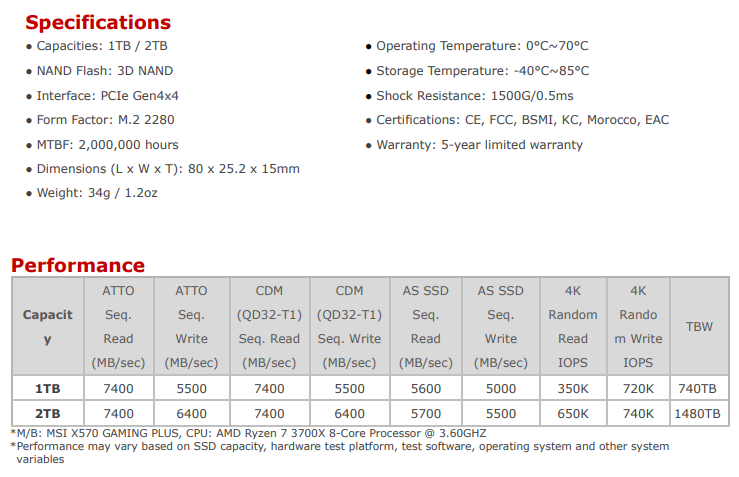
Thus our 1TB is the baby of the duo, with slightly slower performance specs as a result. Still, 7400 MB/s read and 5500 MB/s write are nothing to scoff at and represent top-tier PCIe 4.0 SSD performance. The extra details for the rated performance in specific tests are also interesting, though I suspect almost nobody will look past the ‘7400’ and ‘5500’ numbers. 740TBW endurance represents a decent number, edging out the rated endurance for the Sabrent Rocket 4 Plus 1TB, the WD SN850 1TB, and the Samsung 980 Pro 1TB by varying margins. Finally, the 5-year warranty is a welcome sight.
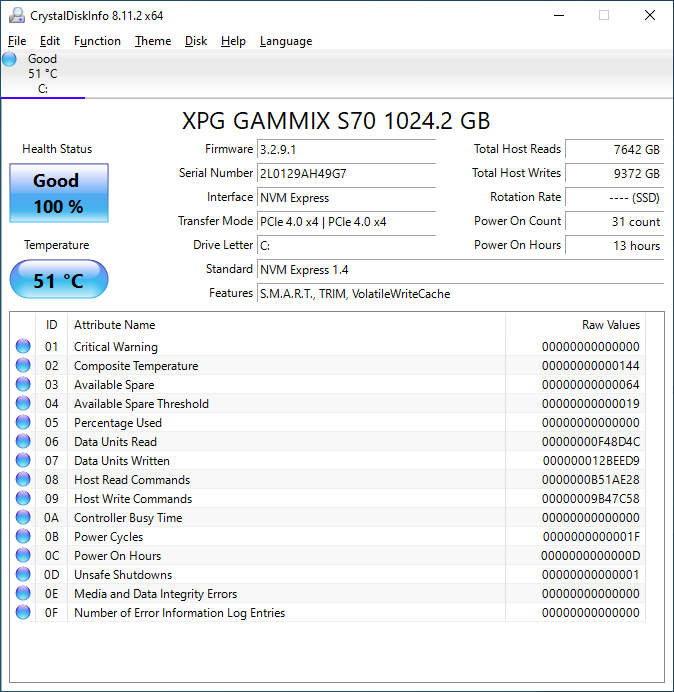
CrystalDiskInfo can give us some basic information about the SSD, and confirms we are operating at PCIe 4.0 x4 speeds using NVMe 1.4.
Test System Configuration
We are using the following configuration for this test:
- Motherboard: ASUS PRIME X570-P
- CPU: AMD Ryzen 9 5900X (12C/24T)
- RAM: 2x 16GB DDR4-3200 UDIMMs
Our testing uses the ADATA XPG Gammix S70 1TB as the boot drive for the system, installed in the M.2_1 slot on the motherboard. The drive is filled to 85% capacity with data and then some is deleted, leaving around 60% used space on the volume.
Next, we are going to get into our performance testing.

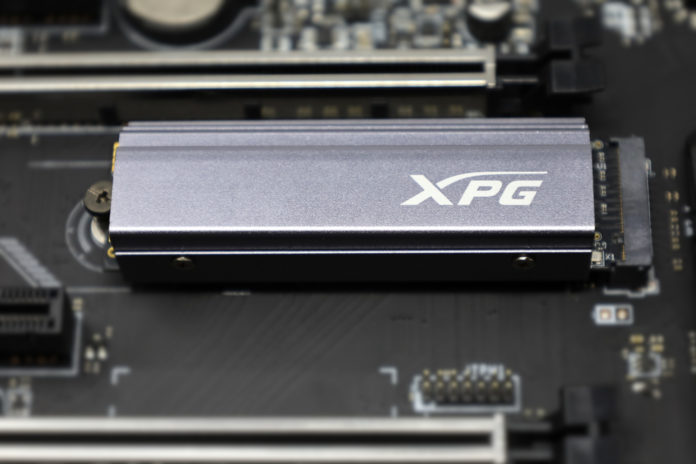



SSD with a non removable heatsink from a company infamous for switching controllers and NAND is going to be a hard pass. Wouldn’t put it past them to send high performing cherry picked models to reviewers and down the line shafting consumers with more inferior variants.
David,
ADATA did not provide this SSD, it was purchased at retail.
Hi Will, thanks for this review. I had one of these. The m.2 slot on my board was located between PCIe slot 1 and the CPU, so not the worst airflow in the case. Still I had to set a 40mm fan to blow air over it, nvme tool reported it hitting 70C when in heavy read use. These things run insanely hot. The performance was very good though and the price was good.
My understanding is 5500MB/s translates to 740TB every 37.4 hours. When a vendor makes a particularly high claim for drive endurance, is this only for the warranty, or does the drive really handle that write load?
In the name of trust but verify, I think it would be useful as a test to spend the total endurance rating, set the drive on the shelf for a week and then check if all the data is still there from the last write.
Eric,
If you write continuously to the drive, write speed drops to 640 MB/s or so as shown in my testing. At that rate, it would take 14 days of continuous writing just to reach the rated 740 TB endurance rating, which is impractical for my review purposes.
With that said, endurance rating primarily serves as a warranty device. It’s like a car mileage warranty – 10 years or 100000 miles whichever comes first. Your SSD is the same, 5 years or 740TB whichever comes first.
“Samsung Rocket 4 Plus” you say? I want one!
@Will – i’m a bit with David on this one. Not that you shouldn’t test it, but Adata has been caught redhanded with altering production to inferior components after the first batches and NOT altering SKU’s or anything else. As shown by Linus Tech Tips who got hold of a whole bunch of them from different batches.
So although the performance is great on this particular unit (i have a gammix unit myself and one of the SX8200 pro’s from the older batches) There is unfortunately no possible way to be certain that during production lifetime, this will hold up. Unless Adata becomes a lot more transperant on why they did this and shows some commitment that they won’t do it again. So the article should be taken with the precaution that that was the initial stage, and there may be problems down the road.)
Claus,
I’m fully aware that ADATA has swapped components on their drives in the past; I was one of the first reviewers to take note of a component swap (the controller) back when I reviewed the SX8200 Pro.
With that said, while I generally disagree with the idea of swapping components without releasing a new SKU, for ADATA at least they do not seem to be cherry picking nor front-loading their drives that they send to reviewers; the SX8200 Pro I reviewed and noted had an inferior controller was provided by ADATA themselves. In addition, nowhere in any of their marketing materials do they guarantee a specific controller or NAND; instead they guarantee a performance rating (so many MB/s). Basically they set their own bar fairly low, so they can easily pass it.
I’m not saying it excuses the behavior; I would still much prefer drives with different components have different SKUs. However, for me all of that moves the dial when it comes to whether I assign a malicious or deceptive motivation to the practice. If ADATA had sent me one of the highest performance variants of the 8200 Pro, or dodged my question when I pointed out the controller change, then my attitude towards them would be very different.
I have an s70 1tb I just purchased from B&H with the latest firmware revision. My CrystalDiskMark scores are closer to 5600/3800, and my ATTO scores are closer to 6.1/3.6. That’s a massive discrepancy from your numbers and what the drive is advertised to be able to do, and I didn’t realize they’d been caught with a bait and switch till after I purchsed and started trying to troubleshoot why my drive performance was so bad. Now, I’m still troubleshooting, but I’m pretty sure I’m going to have to return this drive because it’s essentially faulty since the reason I bought it was for the performance. The controller on mine is Inogrit Rainier 5236CAA, supposedly a fine controller, but the DRAM looks generic af, as does the actual NAND, which has little to no discernable labeling on it. This suggests that I’ve been screwed by ADATA, like thousands of other people.
So, should I buy one or not? If it’s a numbers game, and I have to play if I buy from Adata, what are the chances of getting what I think I’m paying for? Was this just a bad decision by some bureaucrat who’s since been fired or do they really not care if people take them seriously or not?